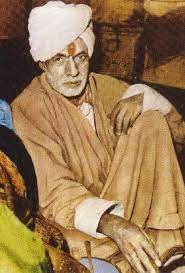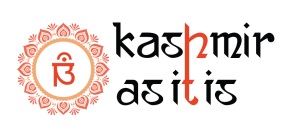NAME – Bhagawan Gopinath Ji called as Gopinath Bhan (“Spiritual Guide of Humanity”)

Born – He was born in a Kashmiri Hindu family of Bhans, Srinagar at Kashmir during 20th century (1898 –1968) AD.
Parents – His father Pandit Narayan Joo Bhan dealt in the business of cashmere wool and devoted much of his time to spiritual pursuits and mother Haar Maal.
Childhood – He completed his education till middle grade from a local Christian missionary school called Tyndale Biscoe School, which used to be situated at Fateh Kadal locality of Srinagar. Here he must have learnt languages like Sanskrit, Persian, Urdu and scripts like Sharda and Devanagari. Since his early years, he had expressed reluctance in taking up any form of employment. He ran the grocery store for ten years before taking to his spiritual pursuits full-time. During his employment days at the grocery store, while manning the cash counter at the store, he would often be found engrossed in meditation. Sometimes he would spend whole night at the store while being absorbed in meditation.

In his younger years, he would recite by heart the sacred Hindu hymns like Bhavani Sahasranama, Indrakashi Strotam, Panchastavi, Vishnu Sahastranam, Shiv Mahimna Strotam, Shivastrotavali, Guru Gita and vaaks composed by some local saints. Bhagwan Gopinath is said to have pointed towards Bhagvad Gita and remarked that anyone its 700 verses can be considered as one’s spiritual master. Based on Bhagwan Gopinath’s comments about Bhagvad Gita, majority of his devotees, including some religious writers, consider him to have been self initiated. Bhagwan Gopinath’s family tried to convince him to get married and take up the worldly life, he chose to live a life of celibacy and did his spiritual practices, all the while living at various localities of Srinagar in Kashmir.
Contributions – Seven such years of his spiritual practice, his devotees affirm that he had become, what they call a siddha purusha (one who attains spiritual powers) as it was right after this period that people started flocking him to get their worldly problems solved. During this stage, he is a said to have practised some technique of meditation that would seemingly help him control elements like fire and water out of the total 36 such elements enumerated in Kashmir Shaivism. He was found talking to and directing invisible people at times. He spiritually initiated a Sikh disciple who had come to see him from some other state and lived at his home for 3 months. He also initiated Pandit Maheshwar Nath Zutshi of Mallapore locality of Srinagar by offering him his pipe. He also started the practice of transfixing his gaze on water filled in a tumbler kept inside a brass basin filled with water. It was also during this time that majority of his miracles were recorded and people started flocking him, seeking solutions to their worldly problems. It was sometime during the period that he came to be called as Bhagwan by his devotees. He regularly visited the shrines of the deities of Mata Sharika Bhagwati and Mata Ragnya Bhawani.
He would rarely initiate anyone by word of mouth. He is known to have guided seekers based on their spiritual aptitude and receptivity in worshipping either saguna Brahman (God with form) or nirguna Brahman (God without form) and sometimes also help them choose their ideal of worship or veer them towards worshipping guru as Parabrahma (the ultimate reality). Though he would recommend saguna upasana for the beginners, he would eventually veer them towards nirguna upasana. As such, his devotees gave him the epithet Jagadguru (spiritual guide of humanity).
His devotees started recording and attributing various miracles like treating incurable diseases, blessing issueless couple with children, bringing back dead to life as the situation demanded, bilocation, mindreading, materialisation, helping people to see the deity of local shrines like Kheer Bhawani and Hari Parbat in human form and also in the form of their effulgence and many more.
References:





